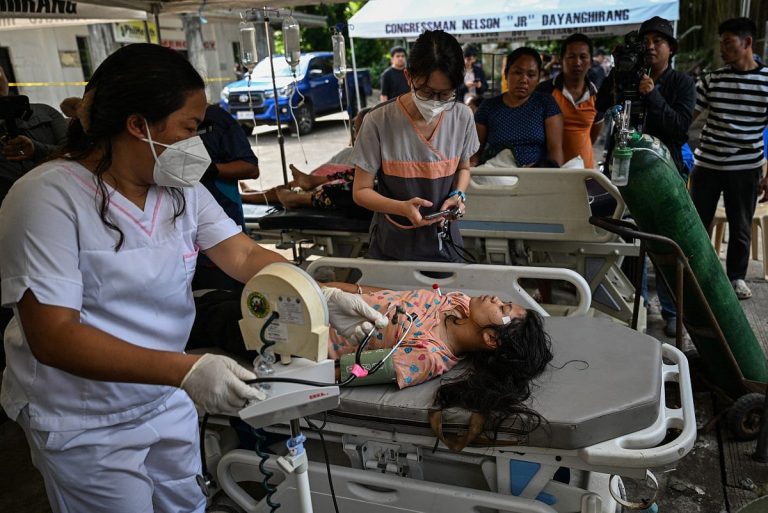Philippines Declares Emergency After Typhoon Kalmaegi Hits
The Philippines is grappling with the aftermath of Typhoon Kalmaegi, which has caused significant loss of life and widespread destruction. In response to the disaster, the government has declared a national state of emergency, enabling swift action to assist affected communities.
Impact of Typhoon Kalmaegi
The typhoon has resulted in at least 114 confirmed fatalities and left 127 individuals missing. Nearly 2 million people have been impacted, with over 560,000 displaced and approximately 450,000 seeking refuge in evacuation shelters. The central province of Cebu has been particularly hard-hit, experiencing severe flooding that has overwhelmed rivers, destroyed homes, and submerged streets.
Government Response
President Ferdinand Marcos Jr. has authorized the release of 760 million Philippine pesos in financial aid to local government units (LGUs) to facilitate relief efforts. This funding will support essential services such as food distribution, evacuation shelter operations, and the clearing of major transport routes. The declaration of a state of emergency allows for the immediate disbursement of relief funds, the establishment of price controls on basic goods to prevent price gouging, and the mobilization of national and local agencies for rescue and rehabilitation.
Challenges Ahead
Relief and recovery operations are facing significant hurdles, including debris-filled roads and scattered infrastructure damage. The threat of additional storms forming in the Pacific further complicates the situation, raising concerns about the safety and well-being of those already affected.
FAQs
What areas were most affected by Typhoon Kalmaegi?
Cebu Province was the hardest hit, experiencing severe flooding and extensive damage to homes and infrastructure.
How is the government assisting those impacted by the typhoon?
The government has declared a state of emergency, which allows for the rapid release of disaster funds and the implementation of price controls on essential goods.
What are the ongoing challenges for relief efforts?
Relief operations are hindered by damaged infrastructure, debris on roads, and the potential for further storms, complicating recovery efforts.
Conclusion
The situation in the Philippines remains critical as the government works to provide immediate relief to those affected by Typhoon Kalmaegi. With the declaration of a state of emergency, authorities are mobilizing resources to address urgent needs and support recovery efforts in the coming days.
In addition to the immediate human toll, Typhoon Kalmaegi has caused extensive damage to agricultural lands, which is expected to have long-term implications for food security in the region. Many farmers have reported losing their crops due to flooding and strong winds, which could lead to increased prices for staple foods in the coming months. The agricultural sector in the Philippines is particularly vulnerable to extreme weather events, and recovery efforts will need to prioritize support for farmers to restore their livelihoods.
The Philippines is no stranger to typhoons, as it experiences an average of 20 tropical storms each year, with several making landfall. The government has established a framework for disaster risk reduction and management, which includes early warning systems and community preparedness programs. However, the increasing intensity of storms, attributed to climate change, poses significant challenges to these efforts. As the country faces the dual pressures of immediate disaster response and long-term climate adaptation, the need for comprehensive strategies to enhance resilience becomes more urgent.
International aid organizations are also preparing to assist in the recovery process. Many have mobilized teams to assess the damage and provide humanitarian assistance, including food, water, and medical supplies. Coordination between local and international agencies will be crucial to ensure that aid reaches those in need efficiently. As the situation evolves, the focus will shift from immediate relief to longer-term recovery and rebuilding efforts, which will require significant resources and collaboration among various stakeholders, including government agencies, non-governmental organizations, and the private sector.
Also Read:
Typhoon Kalmaegi Hits Cebu, Death Toll Surpasses 100
UAE Supports Philippines After Typhoon Kalmaegi Disaster
Cebu Flood Control Efforts Under Investigation After Typhoon







